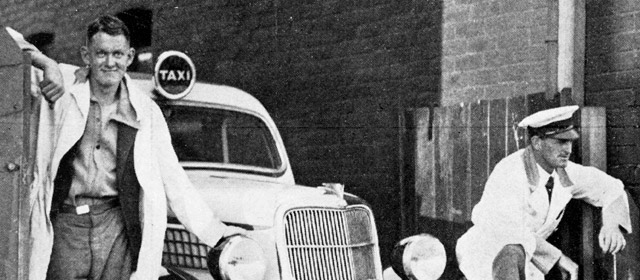Story summary
Hansom cabs
In the 19th century hansom cabs carried passengers in New Zealand’s cities. They were enclosed carriages with space for two people, pulled by a horse.
Driving was hard work. The roads were unsealed, and often muddy and covered in horse manure. In an accident, the driver could fall a long way from his high seat or be thrown over the cab. Accidents became more common after the introduction of trams, cars and buses, which frightened the horses.
Drivers were supposed to be of good character. But some had bad reputations for driving too fast, getting drunk, or being involved with prostitutes.
By the 1920s, only a few hansom cabs remained.
Taxis
Motor taxis first appeared in New Zealand towns about 1905, and were common by 1912. Special telephones were put on poles in the street so people could call a taxi.
During the Second World War, petrol was rationed. There were fewer private vehicles, so taxis, trams and buses were busy. Many male drivers were overseas in the war, so women drove taxis – but after the war, some companies refused to have women drivers.
Radio telephones were introduced in the 1950s. They allowed companies to keep in contact with drivers on the road, and give them jobs. But at busy times there were often not enough taxis. Passengers had to wait in long queues and sometimes share rides.
From the 1970s, later closing hours for bars, and tough laws against drunken driving, led to more people using taxis.
Government control
Until 1989, the government controlled the number of taxi licences and the fares taxis could charge. After the law changed, more taxi companies opened, but there were new rules for drivers.
There have been complaints about drivers attacking women passengers, breaking traffic rules, and not speaking good English. Some drivers have also been attacked and even killed by passengers. Many new immigrants work as taxi drivers.
In the 2000s, some taxi companies had computer systems and tracked their drivers by satellite.





